People may have different ideas about what makes a hedge, but I see it as a linear planting kept regularly trimmed, compact and impenetrable, or consisting of naturally compact shrubs that require little or no clipping to maintain a continuous barrier. If we consider this definition, does this not open up what we think of as a hedge?
They are as old as the hills and a common feature of the landscape in many countries; hedges are one of the most influential design features of our gardens. Traditionally used to mark boundaries, create division within a yard or line a garden background, hedges are now back in fashion. But today's gardens are moving away from traditional hedging materials and designs; we are seeing more exciting uses for hedging within garden designs.
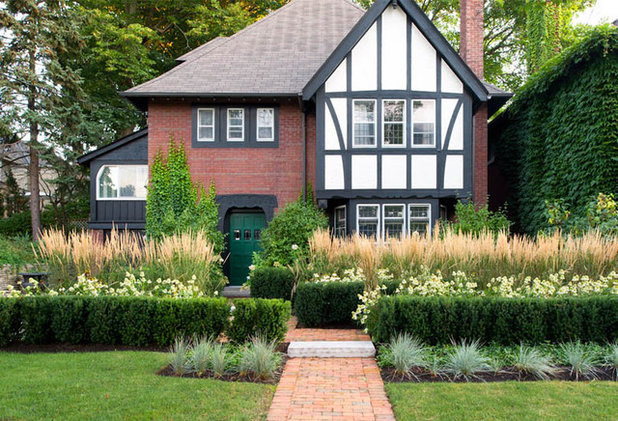
This wonderfully inventive front garden got me thinking about how the use of hedging has changed in modern garden design and whether we should redefine what makes a hedge.
Most of us would agree that the closely clipped evergreens backing the plantings are hedging, but are the rows of grass also hedges? Let's have a look at other ways hedges are being used in today's gardens.
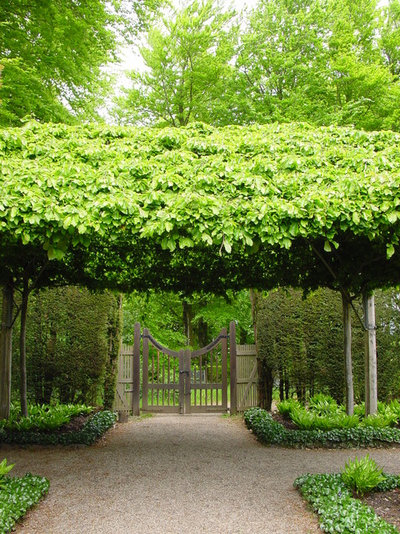 Types of Hedges
Types of Hedges
Stilted hedges are hedges raised on stilts. The stems of the plants are generally clear of branches for 4 to 6 feet, above which the plants are pruned to a hedge.
These hedges are a recent development in smaller gardens, though by no means a new idea. Stilted hedges can be found in formal French gardens and Edwardian gardens, such as Lawrence Johnson's Hidcote Gardens in Gloucestershire, England.
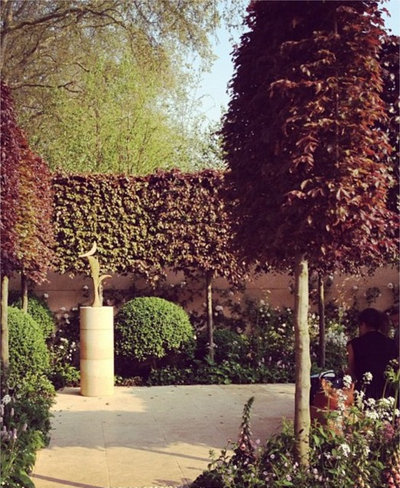
David Ward
As shown here in the Brewin Dolphin garden at the 2012 Chelsea Flower Show, stilted hedges extend the height of boundary fences or walls, offering more privacy in modern smaller gardens.
The most popular varieties used for stilted hedges in the U.K. are
beech (Fagus sylvatica) and
hornbeam (Carpinus betulus), the reason being that they hang on to their leaves over winter, providing almost year-round cover.
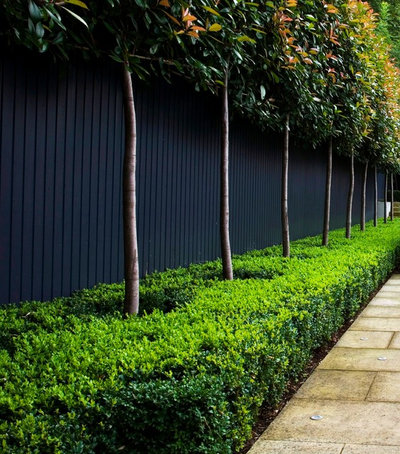
Laara Copley-Smith Garden & Landscape Design
Creating two levels of hedging by underplanting the raised hedge is a nice twist on the stilted hedge that has become popular with garden designers in recent years.
Here we see a formal low-clipped boxwood hedge under the raised hedge of
Photinia x
fraseri 'Red Robin'. Both are evergreen, creating great year-round interest.
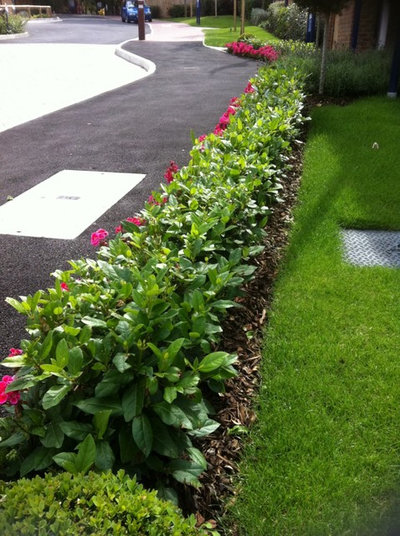 Step-over hedges.
Step-over hedges. I stirred up a hornet's nest in my ideabook on step-over hedges. These tightly clipped low hedges are becoming quite popular on new housing estates and are used to separate front gardens from the pavement or road.
The contentious issue is that the species that tend to be used, such as
Viburnum tinus and
Prunus laurocerasus, are large, strong shrubs if left to grow unclipped.
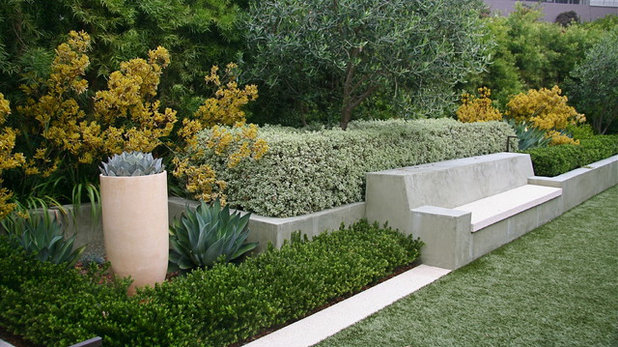
Garden Architecture
There are other less contentious areas of modern gardens where we can now see the use of tightly clipped hedging. Rather than being used for marking a boundary or backing a border, the blocks of hedges here are building blocks of the design. On a practical basis, creating controlled sections of hedging within borders, instead of having traditional plant groupings, reduces the amount of maintenance to almost zero.
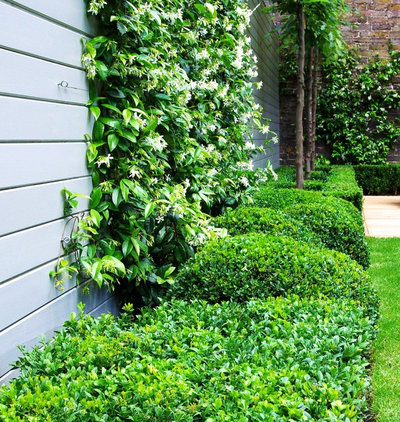
Laara Copley-Smith Garden & Landscape Design
Undulating hedges. The name that always springs to mind when I'm thinking about cloud hedges is that of Belgian landscape designer Jacques Wirtz. He is famed for the use and popularization of evergreens that have been clipped into undulating mounds.
Recent years have seen undulating hedges as a regular feature in show gardens; the Laurent Perrier Garden by Tom Stuart-Smith at the 2010 Chelsea Flower Show is one example. It takes a lot more skill than you would imagine to achieve and maintain the required effect.
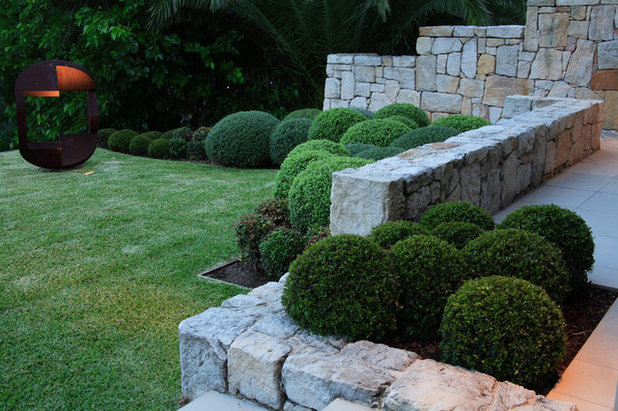
Secret Gardens
By closely grouping clipped evergreen balls, a formal version of cloud hedging can be created. The best plants to use in any form of cloud hedging are those with small foliage that will take close clipping: boxwood
(Buxus sempervirens),
English yew (Taxus baccata),
Japanese holly (Ilex crenata) and
Osmanthus varieties.
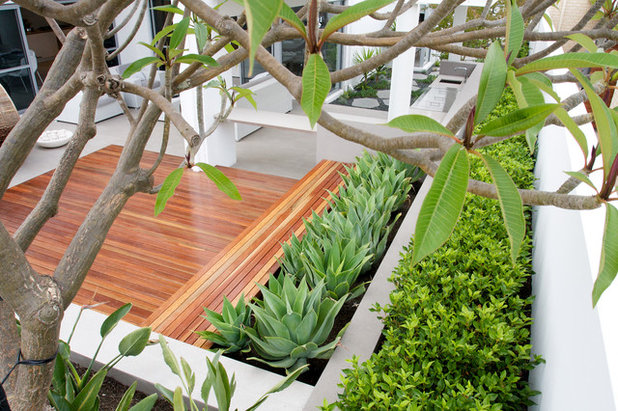
Tim Davies Landscaping
Contemporary Hedging Plants
Succulents. We see in this beautiful contemporary design how hedging has become an integral component of the design, adding mass as well as color and texture. I know that many people would not consider the glaucous agave planting as a hedge, but it does come within the definition of a hedge being a row of linear plantings.
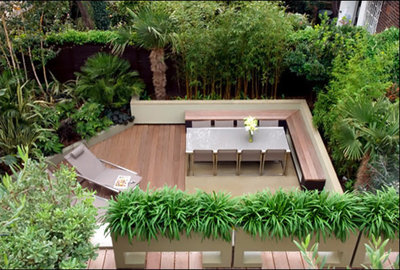
MyLandscapes
This London patio garden by designer Amir Schlezinger is a great example of raised and mobile hedging units. By planting raised troughs with low evergreens, he has created a hedge boundary for the patio while still allowing light and air into the design.
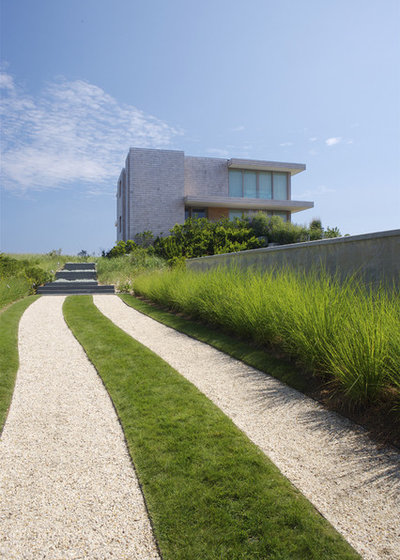
Stelle Lomont Rouhani Architects
Grasses. Contemporary designs don't always need the mass created by traditional hedging plants. This driveway has been lined with a loose planting of grasses, creating a hedge that not only fits its surroundings, but also gives movement in the open environment.
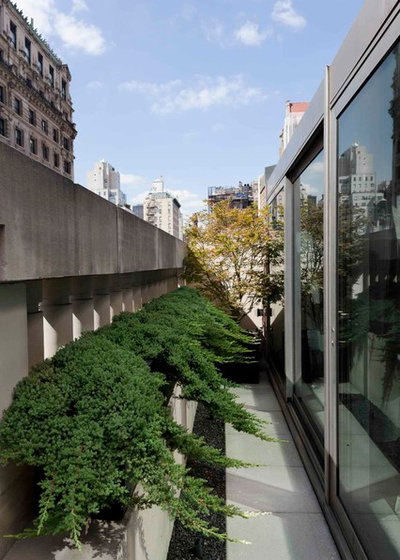
Sozo Landscape Design
Conifers. In urban concrete jungles, hedges are understandably rare. You may sometimes see large window boxes planted with boxwood to create miniature formal hedging, but when space is valuable, hedges aren't a priority.
Here we see a hanging hedge of horizontally growing juniper conifers used to soften the concrete retaining wall.
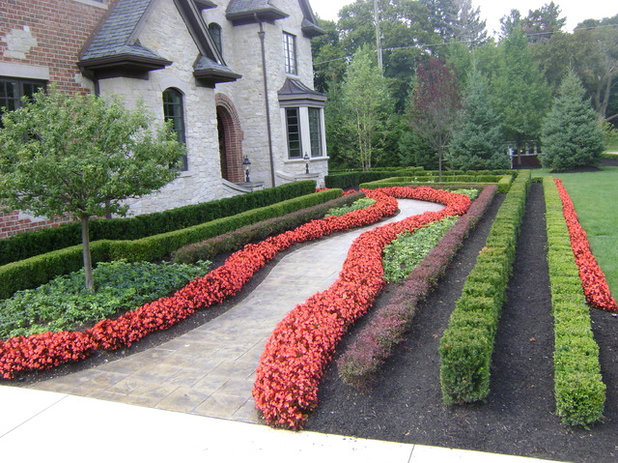
Imagine Landscapes
My final thought on the definition of hedging is regarding size. How low can a hedge be to still be a hedge?
Boxwood used as edging in knot gardens and parterres is still thought of as hedging. Do the lines of the low plantings in this garden also qualify? I think so, but what do you think?





